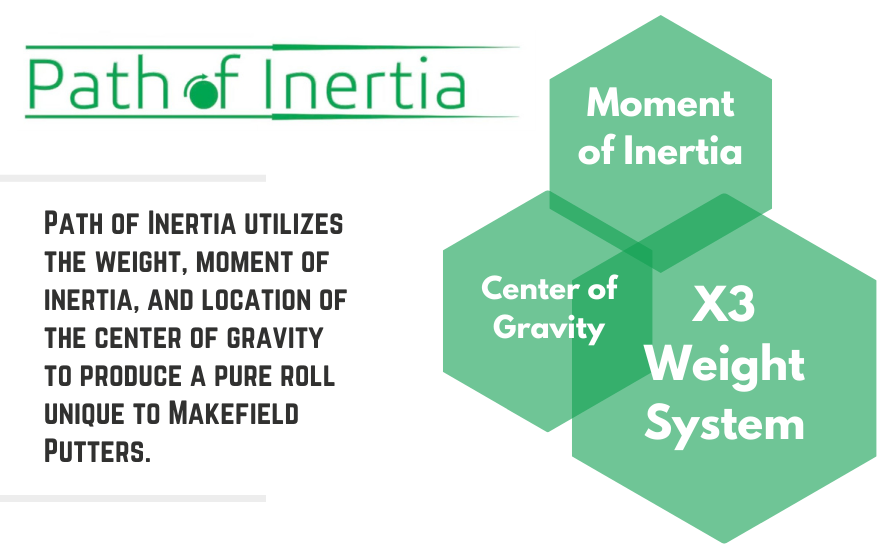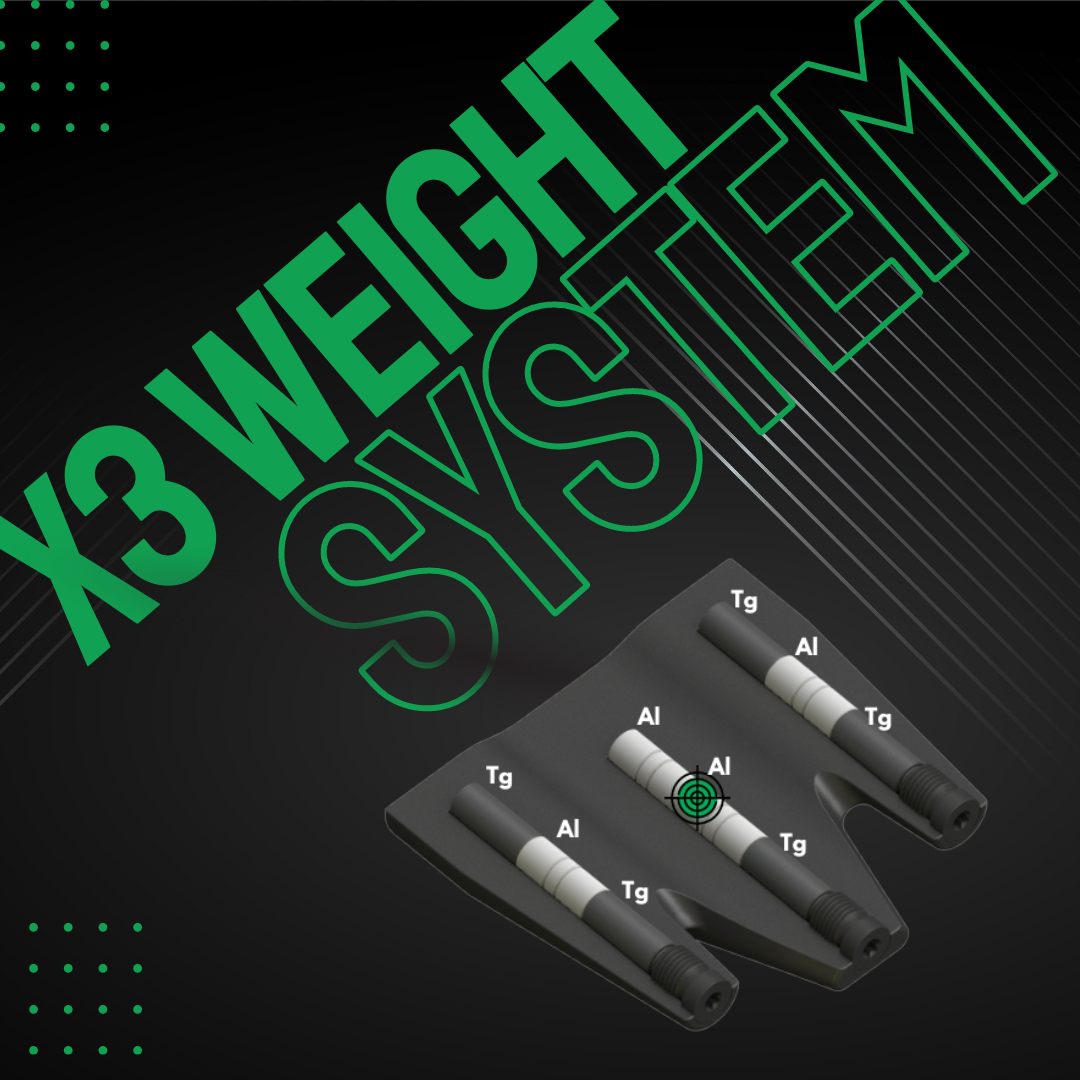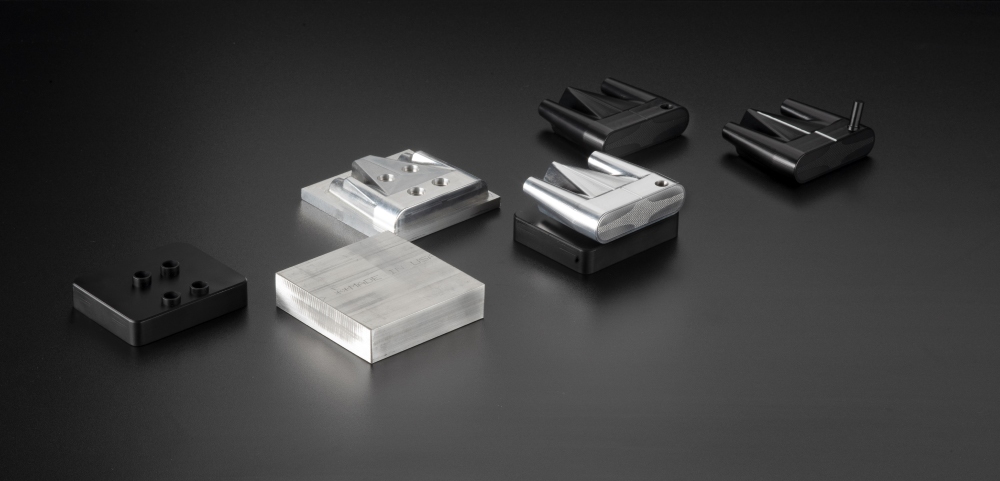Technology
Our Technology
Designed to incorporate science with high quality materials and state-of-the-art manufacturing processes.
Makefield Putters was created with an approach to solving some of the most common problems golfers experience on the putting green:
- Wobbly putting strokes – A wobbly putting stroke is one of the most common problems for golfers because, in order to have a consistent swing path, a golfer must excel at precise muscle movements, which is difficult to achieve for even the best of athletes.
- Distance and directional control – Much like a wobbly putting stroke, distance and directional control of a ball requires precision, specifically, in the weighting of your golf putter.
- Limited ball roll – Also described as the ball bouncing off the face of the club, your ball skids at length, resulting in putts coming up short and off line.
- Accessibility and availability – Today’s golf putter market is flooded with endless options in all shapes and sizes, many of which are made overseas. While having many options can seem like a good thing, it also creates a confusing and frustrating shopping experience.
With all of this in mind, the team at Makefield Putters developed a system called Path of Inertia, which utilizes the weight, moment of inertia, and location of the center of gravity to produce a pure ball roll unique Makefield Putters.
Path of Inertia
Path of Inertia naturally guides your stroke, balances the clubface to the path, and provides consistent centeredness of impact to produce an immediate, consistent roll that lowers golf scores. In combination with golf driver weight technology in our putters, Makefield Putters have endless customization options, truly making it the last putter you will ever need.

X3 Weight System
Driver weight technology in a putter.
Makefield Putters’ X3 Weight System uses Aluminum, Stainless Steel, and Tungsten to create endless customizable options to accommodate all types of golfers’ needs. We created the X3 Weight System for different kinds of strokes, skill levels, and green speeds to create maximum adjustability and performance for all golfers.
Golf Club Manufacturers developed weighting systems in Drivers to fine-tune the club based on a golfer’s swing with the ability to adjust the driver on the practice range before the round. This type of detailed tuning has never been an option in a golf putter until now.
The Makefield V-S Putter was designed to be tuned to a golfer’s stroke and able to adapt to the stroke as it changes through instruction or from years of experience playing. Below are just a few examples of how you can adjust the weights, providing you with a great starting point. To match your stroke, there are endless options to fine-tune the Center of Gravity (CoG).


Makefield Putters’ X3 Weight System uses Aluminum, Stainless Steel, and Tungsten to create endless customizable options to accommodate all types of golfers’ needs. We created the X3 Weight System for different kinds of strokes, skill levels, and green speeds to create maximum adjustability and performance for all golfers.


Standard - Recommended for most Golfers
We recommend every golfer start with Tungsten and Aluminum weights in the Standard setting for the best tempo and optimal Path of Inertia effects. The two outside channels control the clubface, and the middle channel moves the CoG back. This setting allows consistency in both distance and direction, giving the golfer the feel of a mallet putter but the control from a blade putter.


Heel Weighted Biased - Recommended for Golfers that miss to the right
We recommend the Heel Weighted Bias for golfers who miss to the right. This setting will still give Path of Inertia and Tempo, and it will move the CoG closer to the heel, which will lead to the clubface returning to square faster.


Face Weighted Biased - Recommended for Golfers looking for directional control
We recommend the Face Weighted Bias for golfers looking for the feel of a blade putter. This setting will still give Path of Inertia and Tempo, and it will move your CoG closer to the clubface.


Toe Weighted Biased - Recommended for Golfers that miss to the left
We recommend the Toe Weighted Bias for golfers who miss to the left. This setting will still give Path of Inertia and Tempo, and it will move the CoG closer to the toe, leading to the clubface returning to square faster.


Back Weighted Biased - Recommended for Golfers looking for distance control
We recommend the Back Weighted Bias for golfers looking for the feel of a traditional mallet putter. This setting will still give you Path of Inertia and Tempo, and it will move your CoG closer to the back of the putter.
Creating Improved Ball Roll
What sets Makefield Putters apart from major golf club manufacturers is our use of high-quality materials and state-of-the-art manufacturing processes. Most putters are made with multiple pieces of cast materials. Although fast and cheap, this type of construction causes vibration in the putter head, resulting in long skid distance and limited distance and directional control.
Makefield Putters start as a solid piece of Aircraft Grade Alloy that is then CNC milled and assembled using custom-built robotics. Our in-house artisans anodize and laser engrave each Makefield Putter to our customer’s specifications.
Radial Cusp Face Technology (RCFT)
The putter’s face pattern is optimized to contact the ball with minimal friction through Radial Cusp Face Technology (RCFT). Through precise CNC milling of the face, individual intersectional nexuses are created with a near point-like structure. Because of the cusps’ radial profile, the force of the ball that impacts the face evenly distributes into the putter body while not “sticking” to the ball through traditional V or straight grooves.

